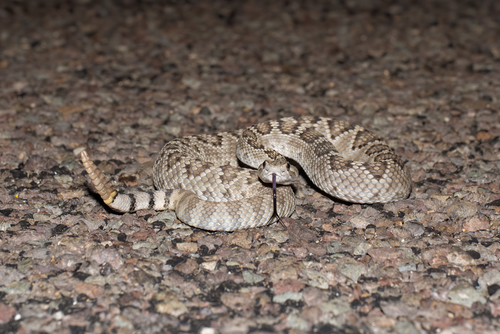
Mohave Rattlesnake
The Mojave rattlesnake, Crotalus scutulatus, thrives in arid deserts with a striking pattern and lethal venom. Its rattle warns of its presence, highlighting its crucial role in balancing ecosystems by preying on rodents. This elusive predator is both feared and fascinating in its desert domain.
12-20 years
Lifespan
Length: 1.372 m
Size
Brown, Green
Color
Least Concern
Conservation Status
Stable
Population Trend
Characteristics
Crotalus scutulatus, commonly known as the Mojave rattlesnake, is distinguished by its potent venom, which is one of the most toxic among rattlesnakes. It inhabits arid regions of the southwestern United States and parts of Mexico, often found in deserts and scrublands. Notable for its diamond-shaped pattern and a distinctive rattle at the tail's end, this species plays a crucial role in controlling rodent populations.
Distribution Range of the Mohave Rattlesnake
Crotalus scutulatus, commonly known as the Mojave rattlesnake, is native to the southwestern United States and parts of northwestern Mexico. Its geographical distribution includes the states of California, Nevada, Utah, Arizona, New Mexico, Texas, and the Mexican states of Sonora and Chihuahua.
Mohave Rattlesnake's Habitat
Environmental Conditions
The Mojave rattlesnake typically inhabits arid and semi-arid environments. It is often found in desert scrubland, grasslands, and lower mountain slopes. The species thrives in regions with sparse vegetation, such as creosote bush, cacti, and mesquite, and is also known to inhabit areas with sandy, rocky, or loamy soil.
Ecological Niche
Crotalus scutulatus is a terrestrial predator that plays a crucial role in controlling the populations of small mammals, birds, and reptiles. It is well-adapted to its desert environment, utilizing camouflage to ambush prey and regulate its body temperature. The species is also known for its potent venom, which it uses both for hunting and defense.
Copyright @ Nature Style Limited. All Rights Reserved.
 English
English